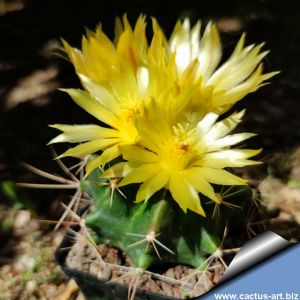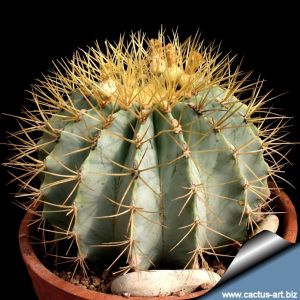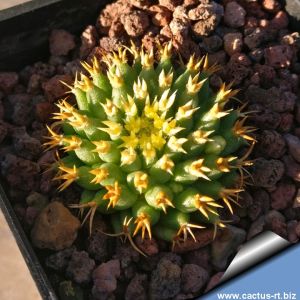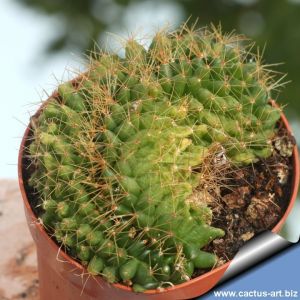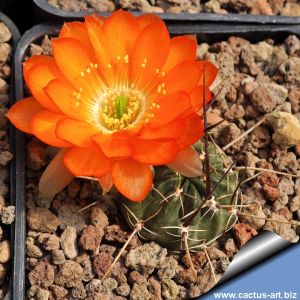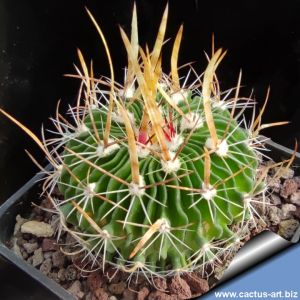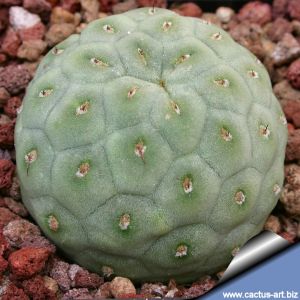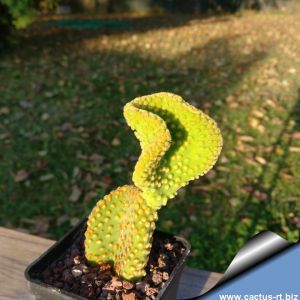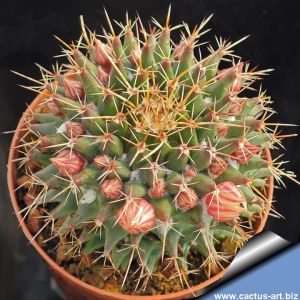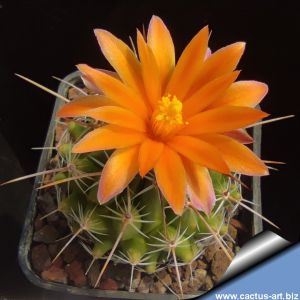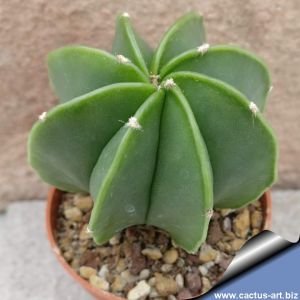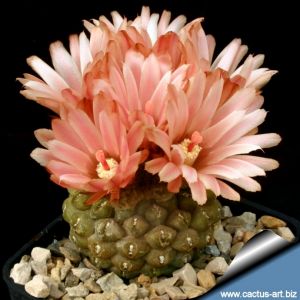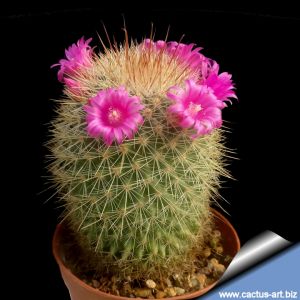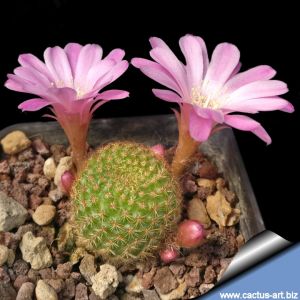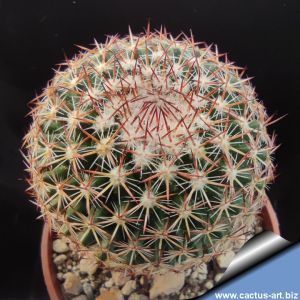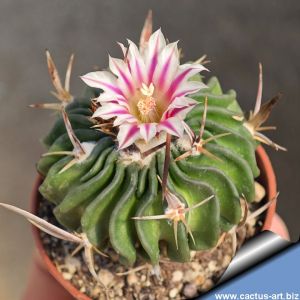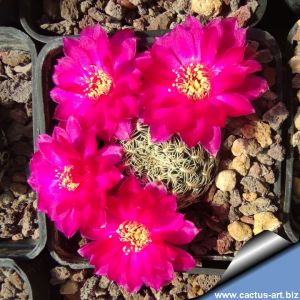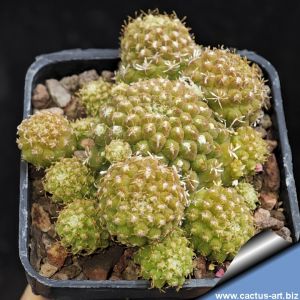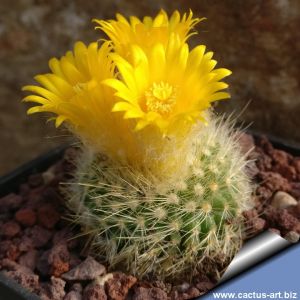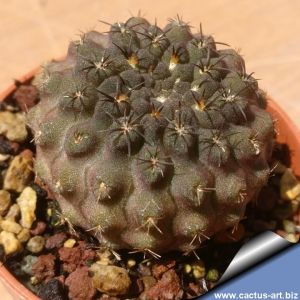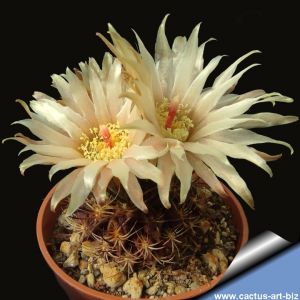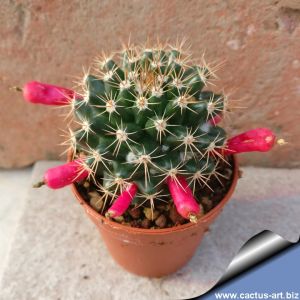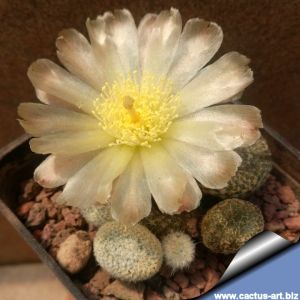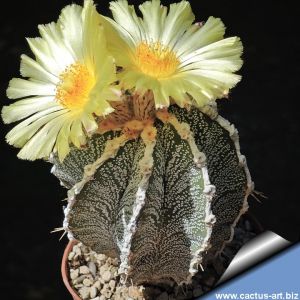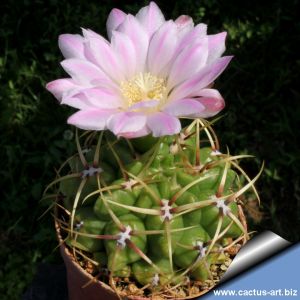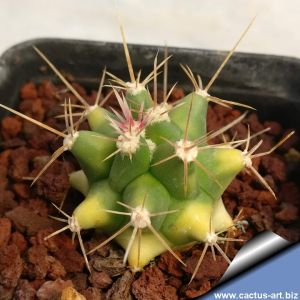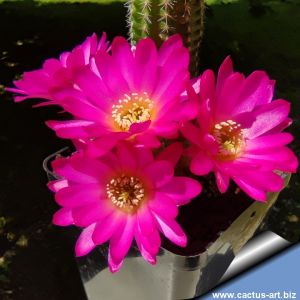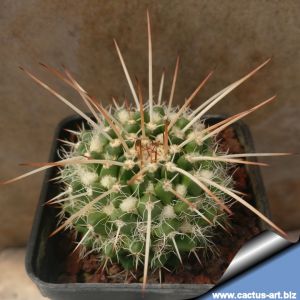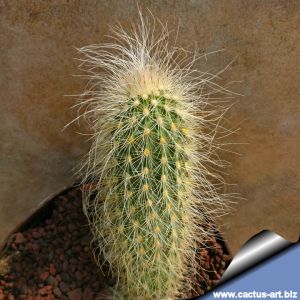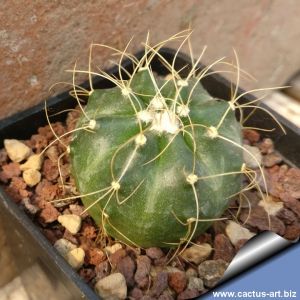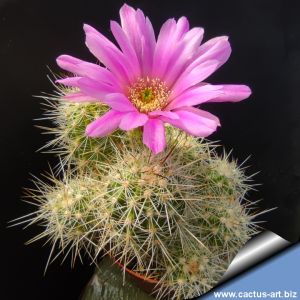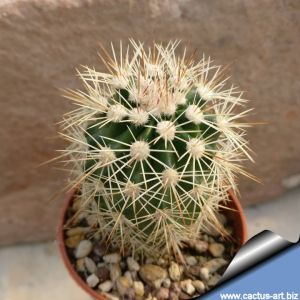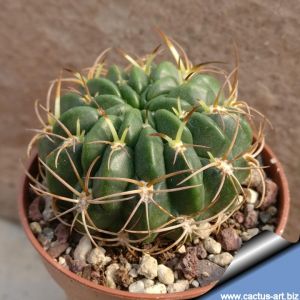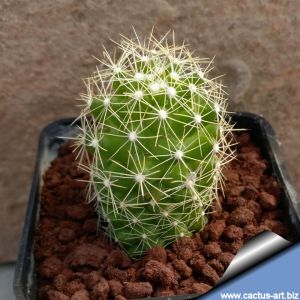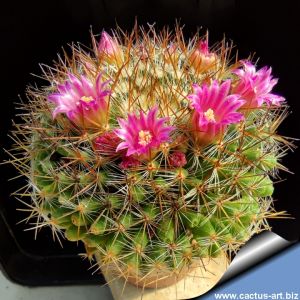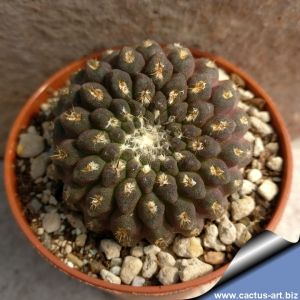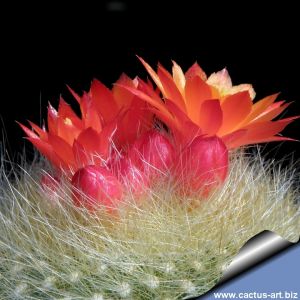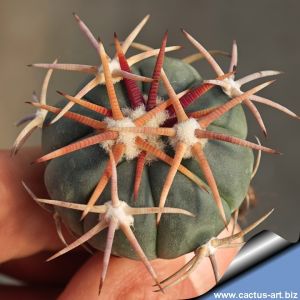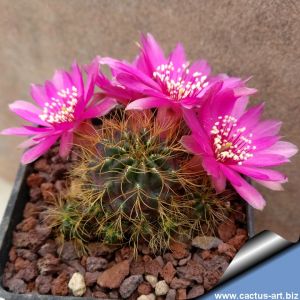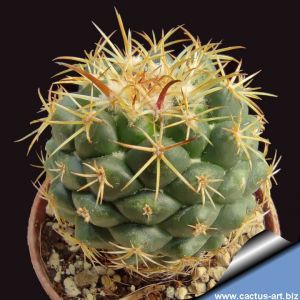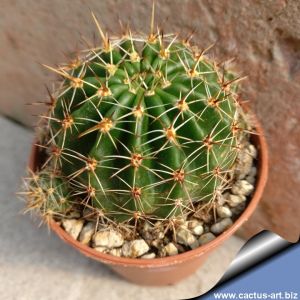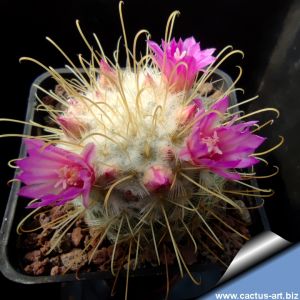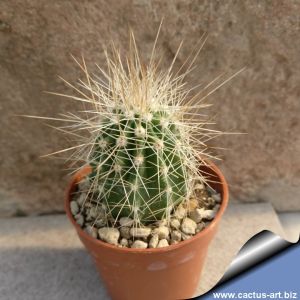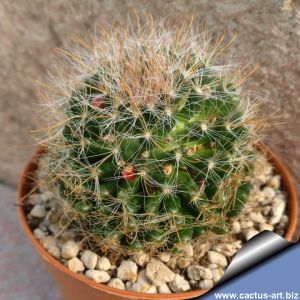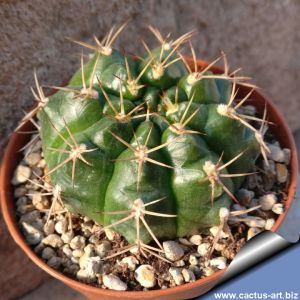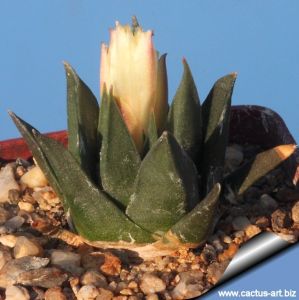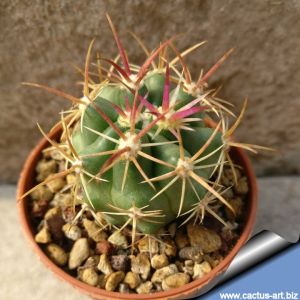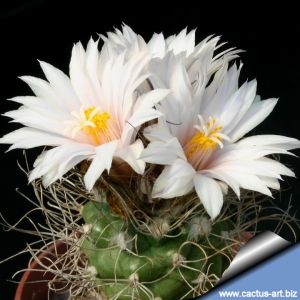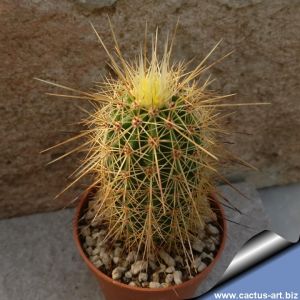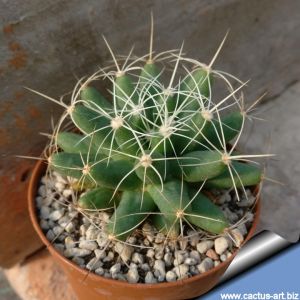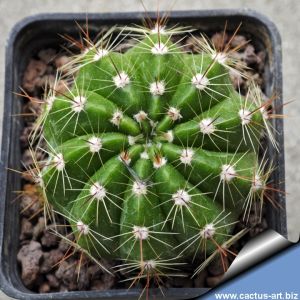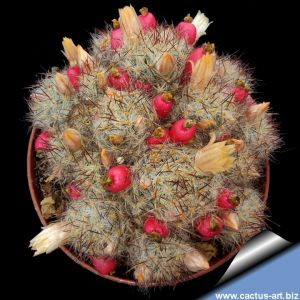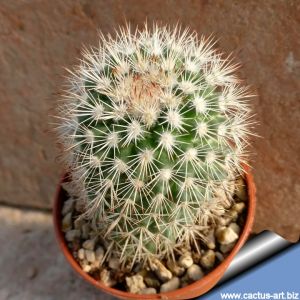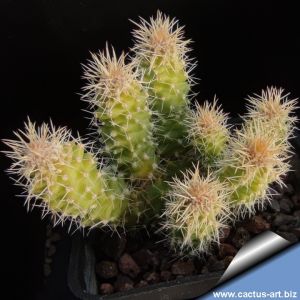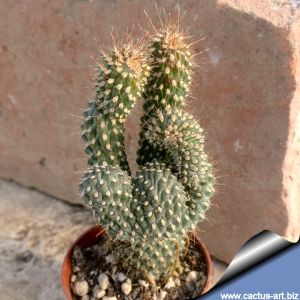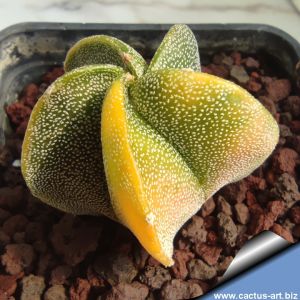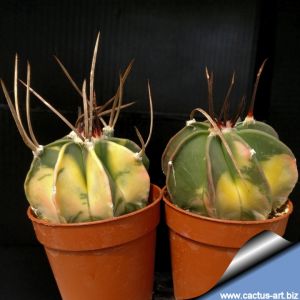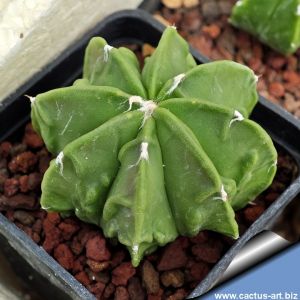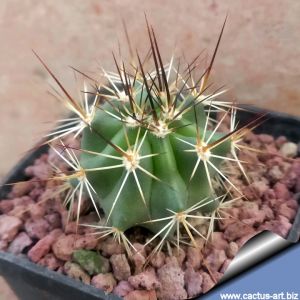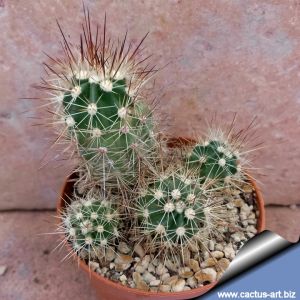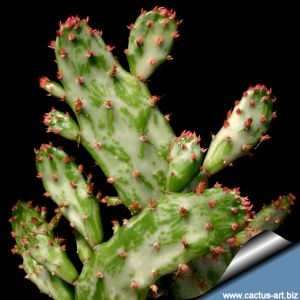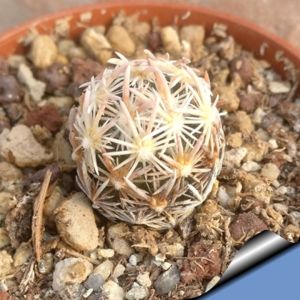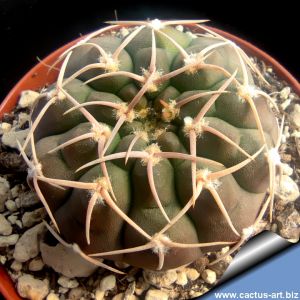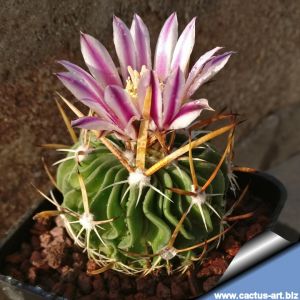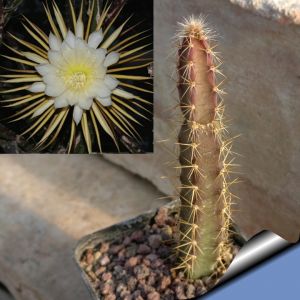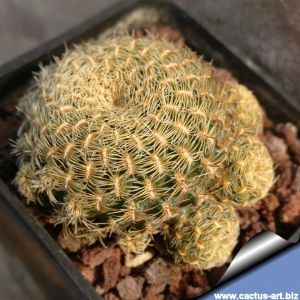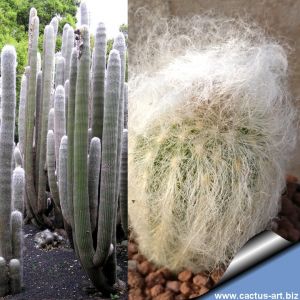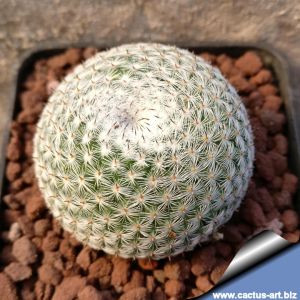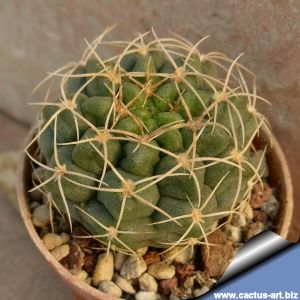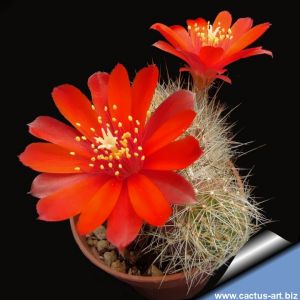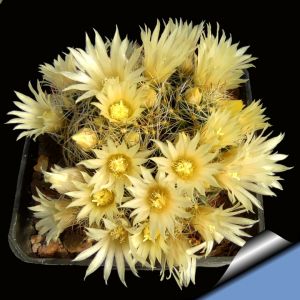-
1
Plants obtained from seeds, variable in characteristics. The young specimens have numerous spines, but over time the spines become more sparse and shorter. Some specimens become very strange.
-
2
Ferocactus glaucescens is a medium sized, barrel cactus with greysh-blue stems. Multiple heads are produced as the plant ages and can form a very large mound. The spines are rather neatly distributed, and the unusual-looking white fruits are unmistakable.
-
3
Very nice form with 4 (-6) very short orangish radial spines. The younger spines are yellow and very attractive).
-
4
-
5
Flowers in amber-yellow, orange, or reddish tones with darker petal edges. The white hymenium (central ring) contrasts beautifully with the petals and green stigma. Blooms profusely.
-
6
-
7
Areoles with almost no or very short spines. Very nice.
-
8
-
9
It thrives alongside Ferocactus echidne REP1139A and Mammillaria priessnitzii REP1134 in its natural environment.
-
10
-
11
Unlike typical OR-MY hybrids, this cultivar shows no or minimal white spotting, displaying a solid green hue that ranges from bright to blue-, gray-, or mauve-green across clones.
-
12
-
13
-
14
-
15
-
16
Juvenile plants bear densely spined areoles, progressively reducing to 3-5 spines when mature. Its flowers display snow-white petals dramatically accentuated by a royal purple midline.
-
17
The flowers cluster around the lower part of the stem, they are purple to purplish red or dark red and clover-shented. The spines are short comb-like, spreading out and bent towards the body.
-
18
Forma prolifera, very rare. It branches profusely from the base and forms dense colonies.
-
19
A beautiful species. Distinctive white-yellow spines refer to chrysos (Greek for "gold"), as in its name chrysacanthion – "golden spine". The golden spination and bright yellow blooms create a radiant, eye-catching display.
-
20
-
21
Small geophytic cactus with a solitary, partially buried body ranging in color from gray-purple to dark copper. Straight or slightly curved brown to black spines. Flowers in shades from cream-white to soft pink.
-
22
-
23
Extraordinary cactus with a large turnip-like root; from it arise flying-saucer-shaped bodies densely covered in pressed white spines, resembling a cluster of white mushrooms. Cream or pale pink flowers exhibit an extraordinary silken sheen.
-
24
The woolly areoles on the ribs have a felty line between them so it seems like the areoles are connected with each other.
-
25
This Gymno dazzles with translucent, amber-yellow spines shaped like curved tusks—dark at the base and glassy at the tips—sentry over its vibrant green body. Its dramatic spines appear hand-carved from amber, making it a perennial showstopper.
-
26
Ferobergia is an hybrid, made by crossing Ferocactus and Leuchtenbergia principis. Variegated plants have sectors, patches or stripes with two or more colours. Plants with variegated body are highly prized. Very variable.
-
27
Chamaelobivia ’Lincoln Happy Thoughts’ is a nice hybrid that bears bright, cerise-pink flowers with a yellow throat.
-
28
Mammillaria nejapensis is very variable, especially for the length of the spines, that greatly depends on sun exposure and age of the plant. This species forms large colonies by dichotomous division.
-
29
Echinocereus delaetii is covered with long weak bristles or hairs. Over time, it can form wide clumps up to 90 cm accross. It is one of the most remarkable species in the genus, that resembles a small plant of Cephalocereus senilis.
-
30
-
31
-
32
-
33
-
34
-
35
A flattened globular cactus reaching 4 cm in height and 8 cm in diameter, bearing central spines ranging from yellow-amber to reddish-brown and vivid carmine-red blooms.
-
36
Small geophytic cactus with a flattened, dark brown, globular stem and taproot. Features short flattened spines and woolly areoles. Summer blooms in white, pink or yellow.
-
37
Notocactus haselbergii (Brasilicactus haselbergii) is a very popular cactus with silvery white spines. It is a heavy bloomer that can sport showy deep orange flowers for a long period of time.
-
38
Flattened blue-grey stem featuring prominent wide areoles and woolly apex. Spines transition from cream to purple, gaining strength and vibrancy over time. A showstopping botanical wonder!
-
39
A deep dark-green plant flushed with violet, readily forming clusters. Its elongated areoles carry soft, pale-yellow, comb-like spines that are long and flexible. Flowers are a vivid magenta.
-
40
Irregular growth with both bare areoles and spiny areoles in alternating bands.
-
41
-
42
Mammillaria bombycina v. flavispina is a selected form that differs from the standard Mammillaria bombycina for its evenly creamy-yellow or yellow hooked central spines, (tips never dark reddish-brown).
-
43
-
44
-
45
-
46
It blooms already at only 3-4 cm in diameter. Long, pointed and vertical tubercles. Yellow flower.
-
47
A striking Ferocactus species from Baja California and southwestern California, growing either as a single stem or in dense clusters of up to 20. Its gently spiraled ribs and yellow-green flowers give it a distinctive charm.
-
48
Tiny cacti with pretty long, curly and flexible central spines. They bear nice white flowers even on cm young specimens. Exceptionally beautiful plants!
-
49
Yellow spination, very beautiful plants, dark magenta flowers with spiny tube.
-
50
-
51
Straight ribs on fresh green stem, yellowish spines, large yellow flower.
-
52
Self-fertile plant. Produces flowers in succession over a long period. The red, edible berries are produced in abundance without the need for fertilization. Easy to grow.
-
53
Mammillaria tayloriorum (Mammillaria tayloriana) is endemic to the island of San Pedro Nolasco Island in the Gulf of California (Sonora, mexico) It grows together with Mammillaria multidigitata, Echinocereus websterianus and Pachycereus pringlei.
-
54
-
55
-
56
Green star-shaped body, with variegated areas from yellow to pink-purple. Each plant is particular, with a combination of colors and patterns that make it unique.
-
57
Variegated plants have sectors, patches or stripes with two or more colours. Plants with variegated body are highly prized. Each specimen different and particular.
-
58
-
59
Pretty form with darker spines, deep pink-magenta flowers.
-
60
Magnificent orange flowers!
-
61
Also known as “Joseph's Coat” is one of the very few naturally occurring white-variegated cacti. As its name suggests, this cactus is variegated or marbled with white, creamy-white, yellow, green and sometimes also with pink in varying patterns.
-
62
Mammillaria rhodantha is a shortly columnar cactus that characteristically divide dichotomously with age forming large clumps. The spines are the more variable of the trait. The dark form has vivid dark reddish-brown central spines.
-
63
Escobaria minima is a rare tiny cactus that stands out for its small size (it can flower at 1 cm in diameter). Stem solitary or clumping. Thick ivory to yellowish spines, pink to magenta flowers. It thrives in soils rich in limestone.
-
64
Gymnocalycium stellatum is a beautiful slowly growing cactus. The stem is noticeably flatten dark greyish-brown to olive coloured. Spines 3, yellow to brown, becoming grey with age, add-pressed straight to slightly curved and flattened against the stem.
-
65
-
66
-
67
Low, clustering stems with pectinate spines pressed flat against the surface, ranging from off-white to greyish or light brown. Notable for its outstanding glossy purple flowers.
-
68
-
69
Globose stems with a depressed apex, so densely covered in short spines and woolly axils that the surface is nearly invisible. Small flowers form a crown around the top, in shades from carmine to purplish-pink.
-
70
-
71
-
72
Stem, tuberous at the base, globose to ovoid in shape. Spines are fine, bristle-like and pubescent—yellowish below, white mid-length, brown or amber at the tips. A genuine winter bloomer, producing greenish-white flowers even when very young.

